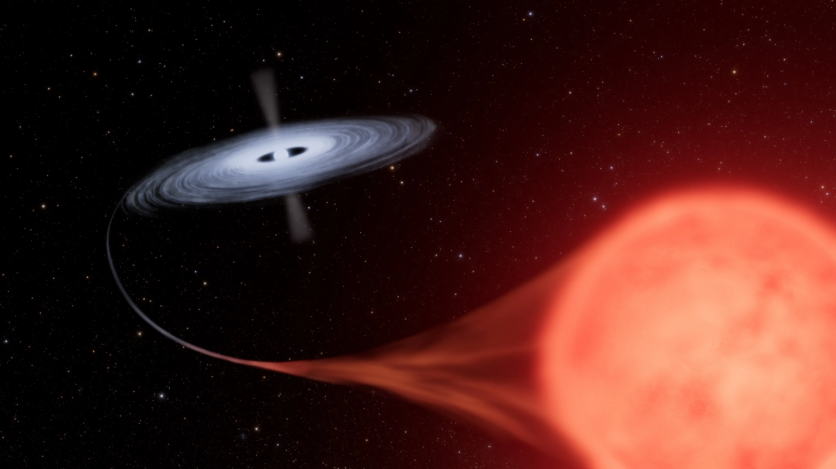NASA/ESA Hubble Space Telescope has delved into a curious binary star system, providing fresh insights into an explosive event that occurred four decades ago.
A Blast From the Past
The system, known as HM Sagittae (HM Sge), erupted in 1975, transitioning from a nondescript star to a luminous nova, which typically dims over time. However, HM Sge has defied expectations by maintaining its brightness for an extended period, prompting astronomers to reexamine its behavior.
Between April and September 1975, HM Sge exhibited an astonishing increase in brightness, growing 250 times brighter than its previous state. Unlike typical novae, which fade relatively quickly, HM Sge has retained its luminosity for decades, intriguing astronomers with its prolonged display.
Recent observations indicate that while the system has become hotter, it has also experienced a slight decrease in brightness, according to NASA. HM Sge is classified as a symbiotic star, characterized by a white dwarf and a companion giant star in an eccentric orbit. The white dwarf accretes gas from the giant star, forming a hot disk around itself.
Occasionally, this disk undergoes spontaneous thermonuclear explosions, illuminating the system with bursts of energy. According to NASA, this dynamic interaction between the companion stars provides valuable insights into stellar evolution within binary systems.
Ravi Sankrit of the Space Telescope Science Institute (STScI) remarked on the significance of HM Sge's sudden transformation in 1975, describing it as a focal point for astronomers at that time.
Collaborating with Steven Goldman of STScI, Sankrit and their team utilized data from Hubble and the Stratospheric Observatory for Infrared Astronomy (SOFIA) to investigate changes in HM Sge over the past three decades.
Analysis of ultraviolet data from Hubble revealed a strong emission line of highly ionized magnesium, indicating a substantial increase in the temperature of the white dwarf and its accretion disk since 1989.

SOFIA Detects Gas, Water, and Dust
The team also utilized SOFIA to identify gas, water, and dust surrounding HM Sge, shedding light on the system's composition and behavior. Infrared spectral data revealed intriguing changes in the behavior of the giant star, which produces significant amounts of dust.
Astronomers observed water moving at high speeds around the white dwarf, indicating the presence of a sizzling accretion disk. The team's collaboration with the American Association of Variable Star Observers (AAVSO) has enabled continuous monitoring of HM Sge, allowing astronomers to track changes in the system over time.
Goldman emphasized the rarity of symbiotic stars like HM Sge, particularly those that undergo nova-like explosions. The ongoing study of HM Sge provides astronomers with a unique opportunity to deepen their understanding of stellar phenomena.
"Symbiotic stars like HM Sge are rare in our galaxy, and witnessing a nova-like explosion is even rarer. This unique event is a treasure for astrophysicists spanning decades," Goldman said in a statement.
The initial findings of the team were published in The Astrophysical Journal.
Related Article : NASA Hubble Space Telescope Unveils Breathtaking Image of Spiral Galaxy That Lies in Ancient Egyptian Queen's Hair

ⓒ 2026 TECHTIMES.com All rights reserved. Do not reproduce without permission.




